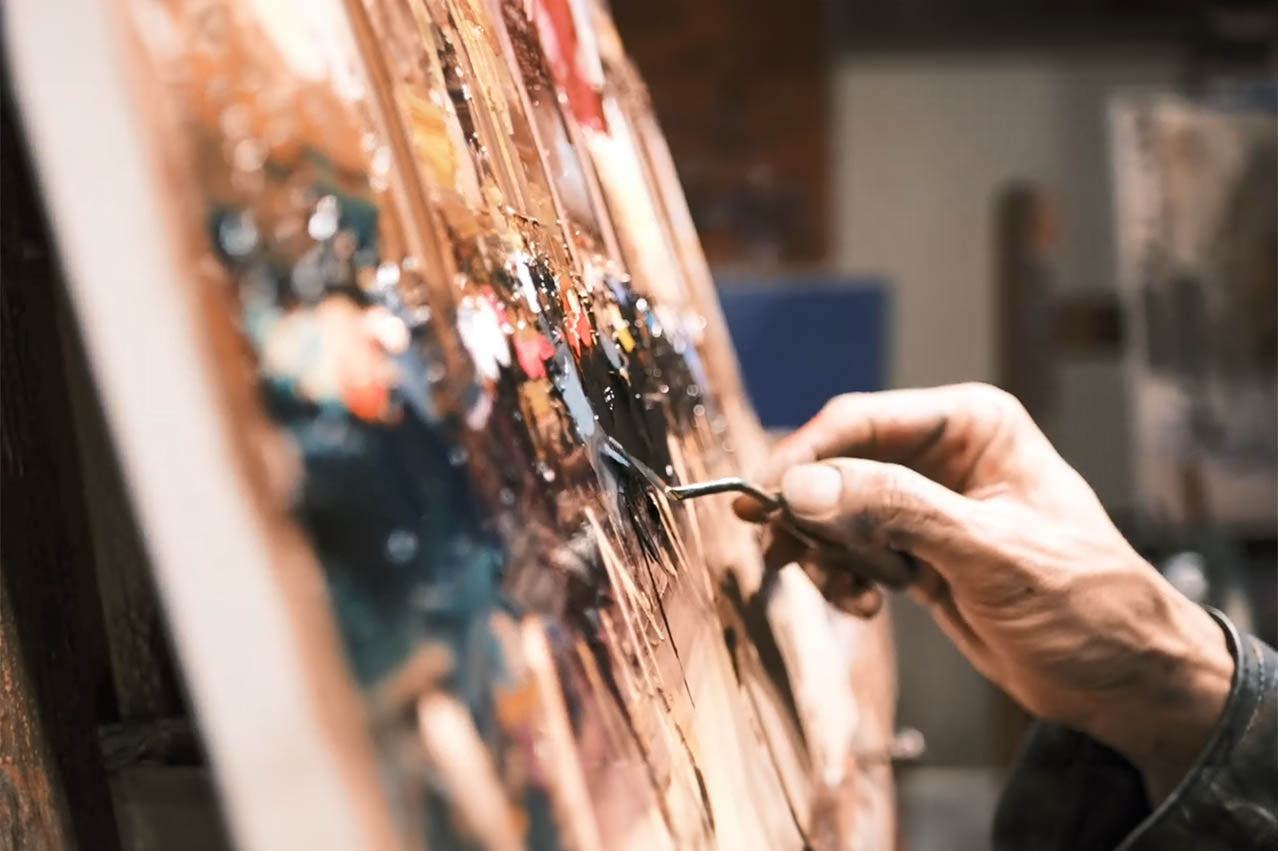What is a Giclée?
Originating from the French verb "gicler," meaning "to spray," a "giclée" refers to a high-quality art reproduction process that utilizes inkjet technology. This method produces prints with vibrant colours, exceptional detail, and increased longevity by spraying microscopic droplets of inks onto archival quality paper or canvas. The giclée, as a digital art printing process, was invented in the late 1980s and began to gain wider recognition and use in the art world in the early 1990s.
The ABCs of Giclée Printing:
Digital Capture: High-resolution photography or scanning is used to capture the original artwork.
Colour Correction: Adjustments are made to the digital image to ensure it precisely matches the colours of the original.
Printing: Advanced inkjet printers are used to create detailed and accurate reproductions. Our printers use archival-quality inks.Finishing: Protective coatings are applied, and, if desired, canvas prints are then mounted or stretched for display.
Our Vision of Giclée...
Collectors and artists often favour giclée prints for the following reasons:
Quality and Fidelity: They closely mimic the original artwork at a more accessible price point.Longevity: With archival inks and substrates, these prints can last over 100 years without significant fading.Limited Editions: Often published in limited quantities, these prints are signed and numbered, increasing their appeal to collectors.Accessibility: They democratize the acquisition of artwork to a broader audience.
Given that giclée prints are occupying an increasingly large share of the art market, we have decided, at Beauchamp Art Galleries, to primarily present what we call "Original Giclée Editions" rather than a mere giclée print (although it may have been well-executed).
To us, an important aspect of giclée lies in the artist's choice to hand-customize or enhance their giclée works. This process involves the artist adding unique touches to the print, such as painting over areas of the canvas or adding texture and highlights. These embellishments can transform a standard giclée print into a unique piece, thus blurring the lines between reproduction and original art. Embellished giclée prints often command higher prices due to their enhanced uniqueness and the direct involvement of the artist.
Is a Giclée an Original Artwork?
A common question arises: can a giclée print be considered an original artwork? The answer is not straightforward. In our view, it is often the artist's signature and involvement in the creative process that categorize a piece as original. When an artist signs a giclée print, especially if it is part of a limited edition or has been embellished, the piece acquires a new level of exclusivity. In the eyes of collectors and art enthusiasts, these factors can elevate a giclée print to the status of an original artwork, particularly because the direct intervention of the artist makes each piece distinct. While purists might reserve the term "original" for the first piece created by the artist's hand, signed and embellished giclée prints occupy a special category by merging reproduction and originality.
The Value of a Giclée Artwork?
This is the BIG question... To be transparent, we have not found any research demonstrating that the value of a giclée increases at the same pace as a unique piece. However, this is not surprising, as the initial purpose of giclée reproduction was to offer an excellent printing option for artists. Giclée's allow them to offer pieces at a very high-quality, and more affordable versions of their works, in addition to democratizing access to art. In our humble opinion, the giclée process is commendable if:
The original artworks created by an artist are at a very high price point, making them accessible to a very limited clientele.The artist, aging or facing limitations, can no longer create unique works at a pace that allows them to live off their art.The artist, before their death, expressed the wish that their artistic creations survive them, thus wanting to offer limited editions of their creations made during their lifetime. This may maintain their presence in the minds of collectors in addition to promoting an activity that advances their reputation among them.
In conclusion, giclée artworks now occupy an important place in the art world, offering quality, longevity, and accessibility. When artists retouch them or intervene on them to enhance, number, and sign them, these prints then present a compelling option for collectors and enthusiasts. We are happy to advise you as you wish to discover this technique, as well as all the other techniques used by our artists.




Partager:
Art + Music
Eggstraordinary Art